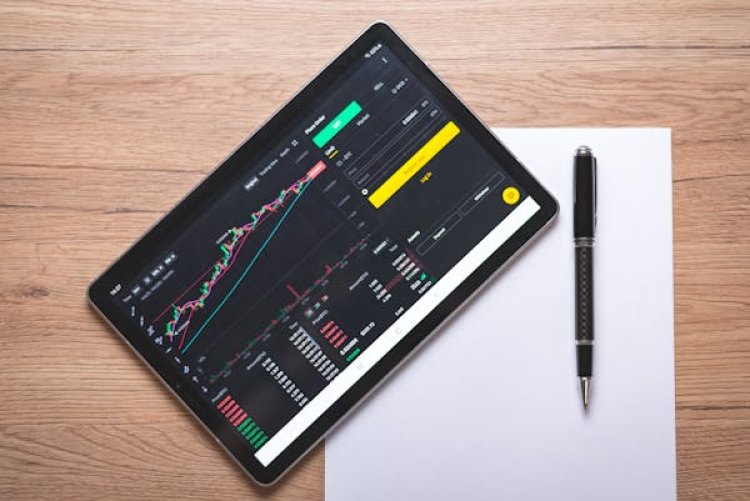Immediate Momentum vs Sustained Momentum in Trading
Share this Post to earn Money ( Upto ₹100 per 1000 Views )

Sustained momentum in trading is a situation in which a stock or market continues to move in the same direction. This direction can either be up or down. This happened for a longer period with consistent strength. This means that the price is not just making a short, sharp move, but is steadily climbing or falling with support from factors. These factors include strong volume, positive news, or overall market trends.
In simple words, sustained momentum shows that buyers or sellers are in control for a while. Also, the price keeps moving with steady pressure in that direction. It often indicates a healthy trend. In short-term momentum, this can fade quickly.
Traders look for sustained momentum in the market. This helps them follow the trends for a longer time. Also, it assists them in avoiding false signals. Trading indicators like moving averages, MACD, and trend lines can help identify this momentum.
On the other hand, immediate momentum in trading means the quick movements of a stock or market in the same direction. This stays for a very short time. It shows how fast the price is changing. It is sometimes caused by news, strong buying or selling, or traders’ sentiments.
In simple terms, it is when prices suddenly speed up. This shows there is a strong energy or force behind the move. For example, if a stock suddenly jumps after an earnings report, that’s immediate momentum.
In this article, we will explore immediate momentum vs sustained momentum in trading. Also, we will discuss the difference between immediate momentum and sustained momentum in stock trading. Let’s get into the article to learn the strategies for trading immediate momentum vs sustained momentum.
Difference Between Immediate Momentum and Sustained Momentum in Stock Trading
Immediate Momentum
It is a short-term burst in price movement that can be either in an upward or a downward direction. It is often driven by sudden news, earnings announcements, or emotional reactions in the market. The immediate momentum typically lasts for a few minutes, hours, or days in the market. It can tell if there is a possibility of reversal or a breakout. Traders watch closely for signs like overbuying/overselling levels or divergence with indicators. It can sometimes lead to false signals. This is because the price reverses quickly after the initial spike. The immediate momentum trading is a good option for short-term traders like scalpers. They look for such movements to capitalize on quick price movements.
Sustained Momentum
It is a steady and ongoing price trend that keeps going in one direction over a longer period. It is caused and backed by strong fundamentals, consistent news, economic data, or market sentiment. This type of momentum can stay longer as compared to the immediate momentum. It remains for days, weeks, or months. In trading, it helps traders follow the trends with more confidence. Moreover, it often works well for long-term strategies. There is a lower chance of unexpected reversals in this momentum. This makes it a good approach to catch profits. However, the trend can still change over time. It is the best for swing traders, trend followers, and long-term investors.
How to Identify Sustained Momentum vs Immediate Momentum in Trading?
Identify sustained momentum versus immediate momentum in trading. For this, it is important to look at the time frame and price behavior. Also, traders should keep an eye on indicators, volume, and the market. The immediate momentum is the fast price movements that happen for a short time. The sustained momentum is a slow and continuous price movement in one direction. It lasts for a longer time and is supported by strong trends.
Traders use tools like the RSI or Stochastic Oscillator to find immediate momentum. It occurs when the price moves with a high volume. Furthermore, they use moving averages, trendlines, and MACD on longer timeframes for sustained momentum. They confirm the strength and direction of the trend with these tools.
Volume is also important in immediate momentum. It sometimes comes with a sudden volume increase. There is a constant volume for a longer time in sustained momentum. Watch how long a trend has stayed and check volume patterns. Also, if traders use multiple timeframes, they can better differentiate between short-term and long-term trends. In this way, they can apply the right trading strategy accordingly.
Strategies for Trading Immediate Momentum vs Sustained Momentum
Strategies for Trading Immediate Momentum
News-Based Trading
Trade right after earnings announcements, economic data, or breaking news. Use stop-losses as there will be high volatility.
Breakout Trading
Enter positions when price breaks through support/resistance with strong volume. Confirm it with short-term momentum indicators like RSI or MACD.
Scalping
Take advantage of small price movements within minutes. Use 1 to 5 minute charts and high-frequency setups.
Momentum Divergence Setup
Look for divergence between price and indicators. This will catch quick reversals.
Gap Trading
Invest in assets that open higher or lower than the last close. Watch for early momentum continuation or reversal.
Strategies for Trading Sustained Momentum
Trend Following
Enter trades in the direction of the trend using moving averages. Use indicators like MACD or ADX to confirm trend strength.
Pullback Strategy
Wait for small drops in an uptrend or increases in a downtrend to enter. Use Fibonacci retracements or trendline support/resistance.
Position Trading
Hold trades for weeks or months to benefit from long-term price movement. Rely on broader patterns and fundamental analysis.
Moving Average Crossovers
Open a buy position when the average crosses above a longer-term one. It guarantees that there is a sustained trend.
Volume-Based Confirmation
Look for increasing volume for a longer time. It helps in telling the strength of the current trend.
Conclusion
Understanding the difference between immediate and sustained momentum is important. Immediate momentum is about fast price moves in a short time, driven by news or strong emotions. Sustained momentum is a steady trend that lasts longer and is backed by good news, solid data, or market trends.















